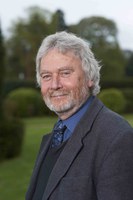The Charterhouse Project: power play, intrigue and regicide in medieval Perth
• The University of the Highlands and Islands, The University of Stirling and The Glasgow School of Art join forces with Perth’s archaeology, heritage and cultural bodies in a project to locate and recreate the city’s lost Charterhouse and the Royal Tombs of the medieval Stewart dynasty which it contained.
• Project aims to harness potential of heritage in economic and cultural regeneration.
• Public showcase at Perth Museum on Saturday on 25 February.
Truth can often be stranger than fiction as a story that could have come straight out of The Game of Thrones illustrates. 580 years ago today, 21 February 1437, James I of Scotland was brutally murdered by Sir Robert Graham, an acolyte of the Earl of Atholl, in a bloody struggle for the Scottish throne. In the aftermath the Queen, Joan Beaufort, who survived the attack, wreaked a terrifying retribution upon the traitors in one of the most brutal, savage and grisly acts of revenge Scotland had seen.
James and his wife Joan were both buried in Perth’s ‘Charterhouse’, a monastery of Carthusian monks which he had commissioned as a showcase and future mausoleum for his dynasty. A century later, the sister of Henry VIII of England, Margaret Tudor, consort of King James IV of Scotland, was also buried here.
Today, 21 February 2017, experts in archaeology, Scottish history and 3d visualisation from the University of Stirling, The University of the Highlands and Islands and the School of Simulation and Visualisation at The Glasgow School of Art announced a joint venture that seeks to locate the Charterhouse site – and the tombs within it – and recreate it as a virtual museum for the 21st century.
Project lead Professor Richard Oram, Dean of Arts and Humanities at the University of Stirling, said: “Perth’s Charterhouse was unique in Scotland. James built it to be the spiritual focus of his dynasty and poured huge sums of money into it to create a splendid setting for his tomb. Medieval descriptions speak of the magnificence of the church, but nothing of it remains above ground to be seen today – the whole monastery was plundered and demolished at the Reformation.
“Working with our archaeology colleagues and the wider community in Perth, we aim to locate the Charterhouse buildings and recover as much of their plan as possible to allow us to ‘build’ a virtual reconstruction of the complex and restore the jewel in the crown of the city’s lost medieval heritage. Unearthing this almost forgotten building will transform understanding of Perth’s place in James I’s ambitions: locating the royal tombs within the church would be the icing on the cake.”
The Centre for History at the University of the Highlands and Islands has an exceptional reputation for innovation in research, public history and the provision of higher education. One of the university’s thirteen partner colleges is the vibrant campus at Perth.
Dr Lucy Dean, the newest member of the Centre for History team at the University of the Highlands and Islands and co-investigator on the project, adds: “In the early fifteenth century, Perth was at the geographical heart of the country, a few miles from the inaugural site of Scottish kings, and the setting for parliaments, exchequers, church courts, royal ceremonial, and a bustling hub for trade in the later fourteenth and early fifteenth centuries. The murder of James I was a pivotal moment that saw a rapid end to Perth’s status.
The Charterhouse Project will allow the local, national and world communities the opportunity to discover and re-discover the fascinating history of this lost capital through innovative research and delivery methods. Moreover, both the research and the products it will produce will offer innovative educational tools and involvement for all levels from primary to high education and beyond.”
The Glasgow School of Art’s School of Simulation and Visualisation is in the forefront of 3D visualisation and virtual reality in projects including the Scottish Ten (with Historic Environment Scotland) and the Definitive Human Anatomy (with Royal College of Surgeons of Edinburgh and NES). Project lead at SimVis, Paul Wilson, said: “The Charterhouse Project offers the opportunity to use state of the art 3D visualisation techniques to bring this exciting period of history to life, and to create a vivid sensory experience of James I’s burial place in 360 / 3D Super High definition which would be accessible across a range of different platforms and devices.”
The public will have a chance to learn more about the project on Saturday 25 February 2017 through a digital presentation at Perth Museum and Gallery (10am – 12 noon). A walking tour of the city (12.30pm -2pm) will offer the opportunity to hear about King James I’s dreams to make Perth the capital of Scotland, how these were violently ended in 1437, and how archaeological and historical research are helping to tell the story.
For further information on the project visit: www.kingjames1ofscotland.co.uk
Follow developments on Facebook: www.facebook.com/kingjames1ofscotland and Twitter: @james1ofscots
